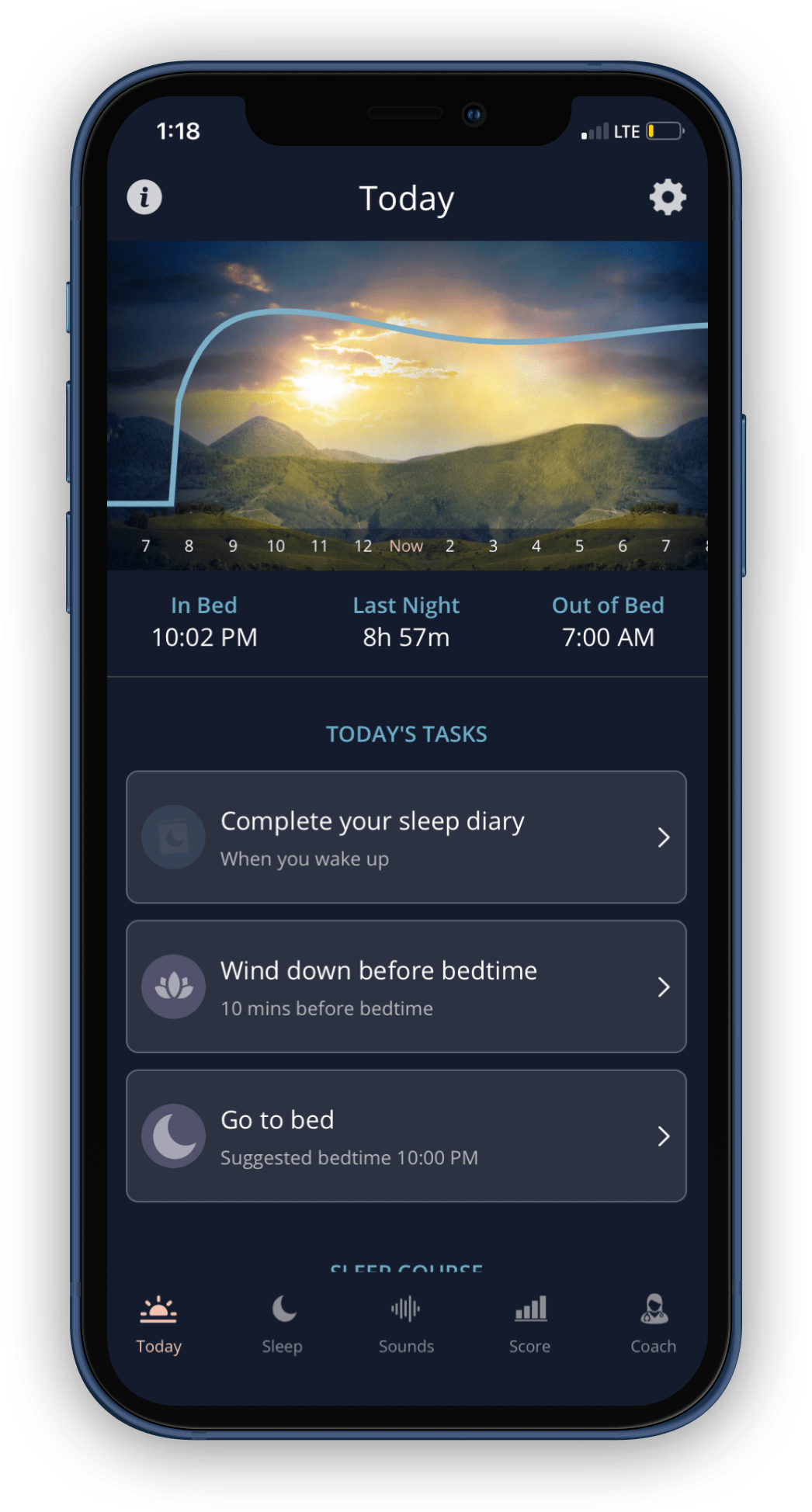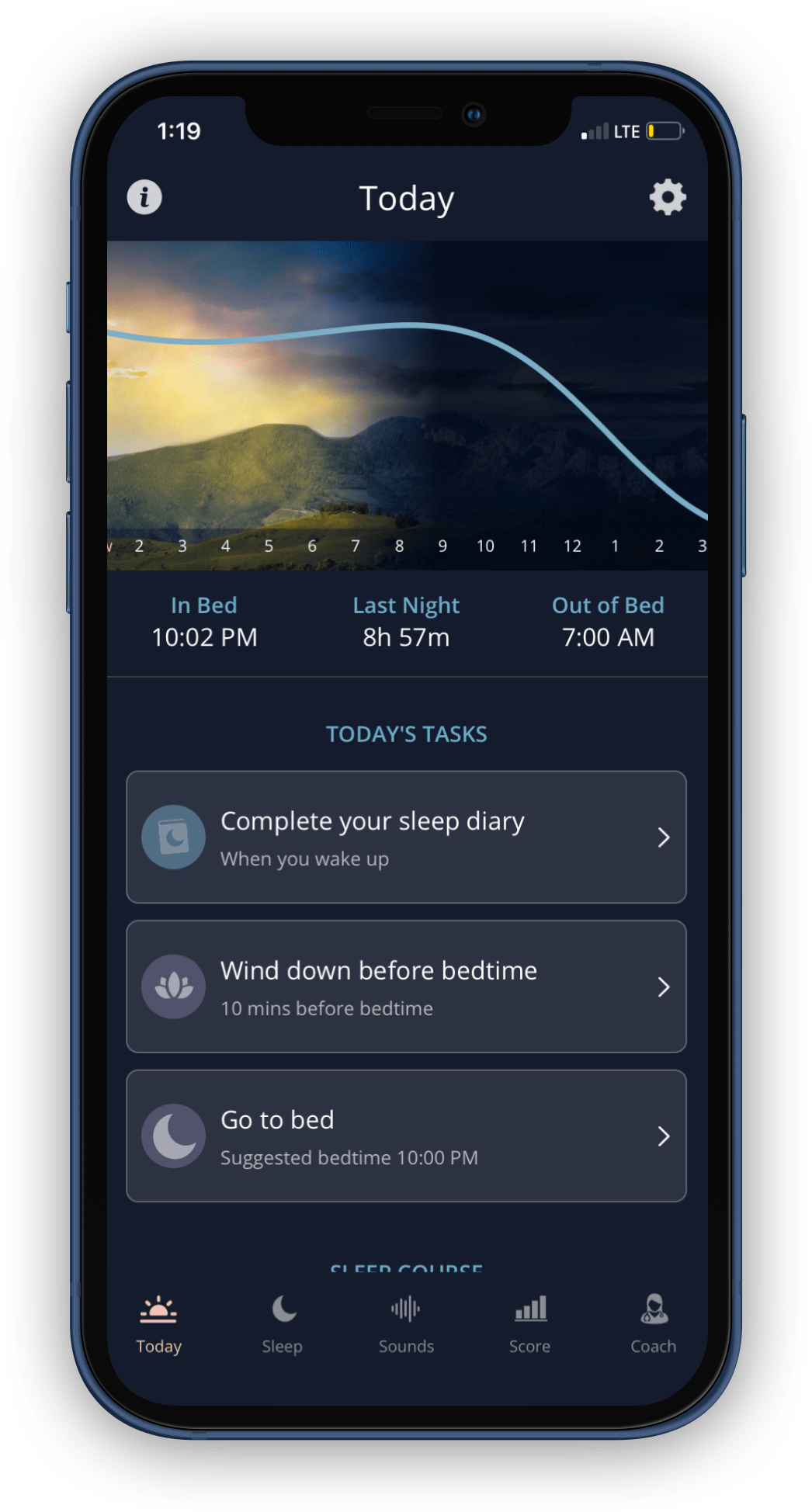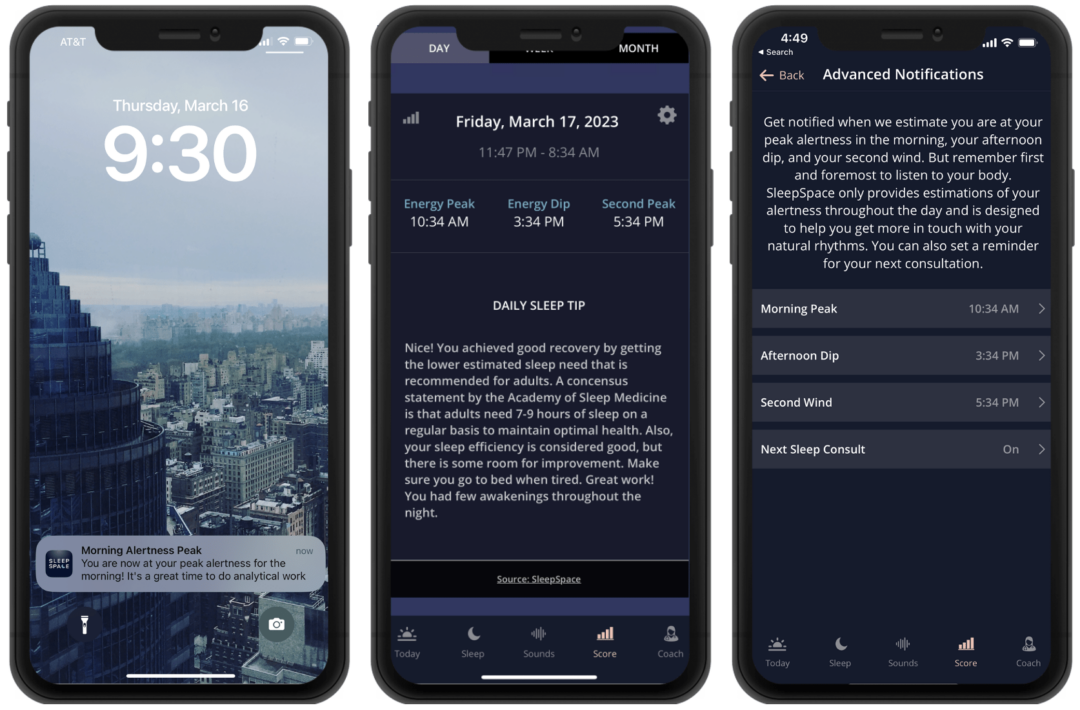Understanding your circadian optimizer
How SleepSpace helps you manage your daily energy

The chart at the top of the Today screen is your circadian optimizer. The circadian optimizer helps you visualize your body’s alertness and natural rhythms. It shows your estimated alertness based on 3 important processes: 1) circadian rhythms, 2) sleep need and 3) sleep inertia (grogginess when waking). This chart gives you insights on the best times to do different activities like sleep and exercise. Unlocking the science behind your unique circadian rhythm will help you optimize your energy throughout the day.
When you wake up in the morning, your alertness ramps up for about an hour. Avoid big decisions, during this time, and get some sunlight if you can.
Over the next hour to three hours after awakening in the morning, most people are at high alertness. This is the best time for important tasks and to get the most out of a workout.
Then you'll likely experience an afternoon dip for two to three hours when your energy is slightly lower. It's a good time to focus on simple, non-analytical activities. This is the optimal window to take a nap typically or do a relaxation exercise such as a body scan or a non-sleep deep rest protocol. However, it is improtant to also remember that it is not recommended to take naps if you are having problems falling asleep and staying asleep. For more information on how to get the most out of naps, such as the perfect nap length for you, click here.

Your Daily Circadian Cycle Chart
Your energy levels typically rise again in the late afternoon/early evening during two hour second wind. This is another good time for important tasks and to exercise. Be sure to avoid caffeine during this time.
An hour before bed, your energy begins to wane as melatonin release starts. We recommend dimming the lights and limiting technology. Try our smart light integration with LIFX for the best wind down experience on the market.
Your ideal bedtime is directly related to the time you got up that morning: the earlier you wake-up, the earlier you'll body will typically want to wind down. The circadian optimizer helps you keep a consistent schedule, a key to optimizing your alertness.
Keep in mind that this chart is only an estimate of your daytime energy. Other factors such as stress, illness and exercise can also influence the way you feel.
Circadian Alertness Notifications
SleepSpace can give you information about your circadian rhythm based on your previous night of sleep. This will help give you personalized insights on the meaning of your unique circadian clock. Get notified when we estimate you are at your peak alertness in the morning, your afternoon dip, and your second wind. But remember first and foremost to listen to your body. SleepSpace only provides estimations of your alertness throughout the day and is designed to help you get more in touch with your natural rhythms.
